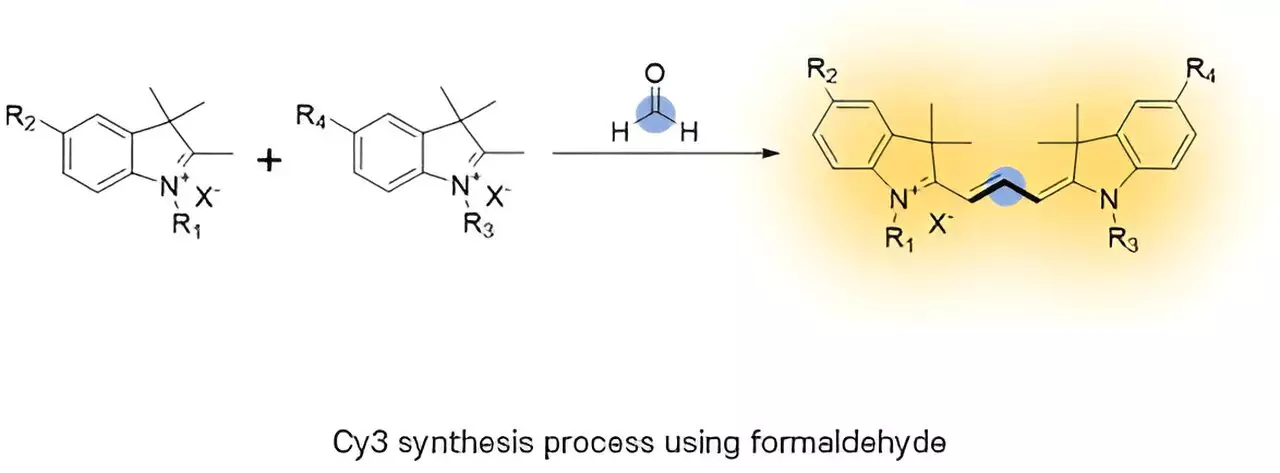In recent years, the need for efficient and cost-effective fluorescent markers has surged, primarily due to advancements in medical diagnostics and bioimaging techniques. Organic fluorophores play a pivotal role in these domains, facilitating processes such as cancer cell tracking and genetic analysis. However, the traditional methods for synthesizing these compounds, particularly the trimethine cyanine (Cy3), have been encumbered by complex procedures and significant byproduct formation, which raises questions about both environmental impact and economic viability.
A Breakthrough in Synthesis Using Formaldehyde
A research team, led by Professor Young-Tae Chang from POSTECH, has turned the tide on conventional fluorophore synthesis practices. Their study, published in Angewandte Chemie International Edition, highlights a remarkable innovation: the use of formaldehyde, the simplest organic carbon molecule, to synthesize Cy3. Unlike traditional methods that involve cumbersome precursors resulting in low atom efficiency, this new approach utilizes formaldehyde to create essential carbon-carbon bonds more neatly and effectively.
This strategic pivot not only simplifies the molecular composition required for synthesis but also enhances the overall sustainability of the process by minimizing waste. The one-pot reaction not only reduces the number of necessary steps but also maximizes efficiency, thereby setting a new benchmark in the organic chemistry domain.
The Implications of Research Findings
The implications of the team’s findings extend beyond synthetic efficiency. The study delves into the biocompatibility of formaldehyde, typically known for its potential toxicity in vivo. The researchers navigated this concern by investigating the natural production of formaldehyde through metabolic processes within living organisms. Their experimentation with rat small intestine tissue indicated a notable difference in fluorescence signals, where inflammation led to reduced formaldehyde levels and subsequently weaker Cy3 signals. This correlation not only showcases the practical application of their synthetic method but also emphasizes its potential diagnostic relevance.
This pioneering work could pave the way for novel applications in molecular imaging and personalized medicine, significantly enhancing the accuracy of diagnoses based on the presence of specific substrates or processes within biological systems. The method’s versatility suggests its potential extension to other organic fluorophores, thereby expanding its impact on various scientific and clinical fields.
In closing, the synthesis of Cy3 using formaldehyde represents a significant advancement in organic chemistry. By distilling a complicated process into a more accessible and economically viable method, Professor Chang and his team have shifted the paradigm for the future of organic fluorophore synthesis, fueling further exploration and innovation in the field. As research progresses, the adaptation of these findings could ultimately lead to revolutionary advancements in healthcare technology.



Leave a Reply